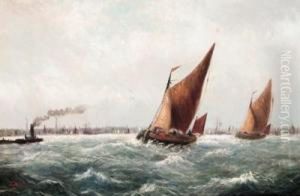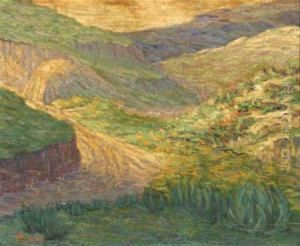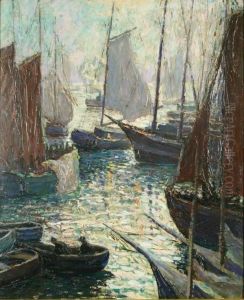Theodore John Morgan Paintings
Theodore John Morgan was an American artist known for his landscape and marine paintings. Born on August 16, 1872, in Hartford, Connecticut, Morgan developed a strong connection with the natural world early on, which would later be reflected in his artistic work. His father, Solomon Morgan, was an engraver, and young Theodore was exposed to the world of art and craftsmanship from a tender age.
Morgan's art education began at the Hartford Art School, after which he further honed his skills at the Art Students League in New York under the tutelage of artists like George Bridgman and Kenyon Cox. He sought to capture the beauty of the American landscape through his paintings. His works often depicted the serene and bucolic countryside, seascapes, and occasionally urban architectural scenes.
After establishing his reputation as a landscape painter, Morgan traveled extensively to find inspiration for his work. He was particularly drawn to the coastlines of New England and the rustic charm of rural America. His style can be characterized by a harmonious blend of naturalism and impressionism, with an emphasis on light and color to evoke mood and atmosphere.
Throughout his career, Morgan was an active member of the art community. He exhibited his work at various institutions, including the National Academy of Design and the Connecticut Academy of Fine Arts. His paintings were well received, and he was known for his ability to convey the tranquility and timeless beauty of the landscapes he portrayed.
Morgan's artistic output was prolific, and his works are now part of several collections and museums. He remained dedicated to his art until his death on December 10, 1943, in New York City. Theodore John Morgan's legacy lives on through his paintings, which continue to be appreciated for their serene beauty and their embodiment of the American spirit at the turn of the century.


